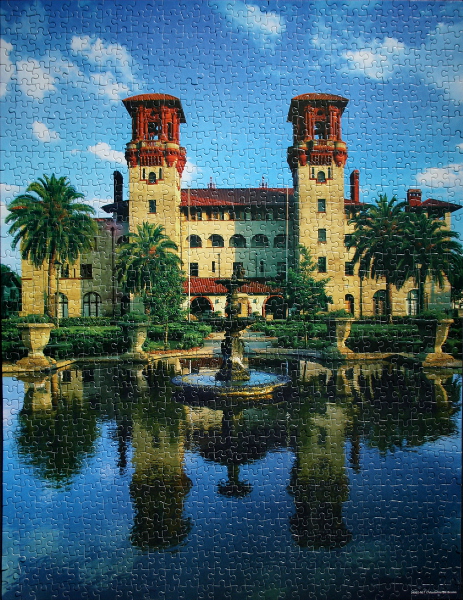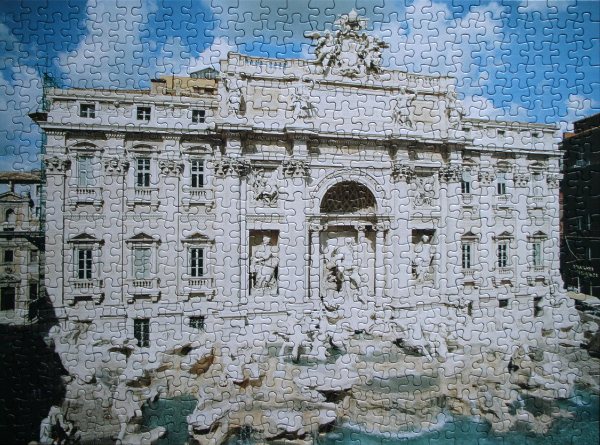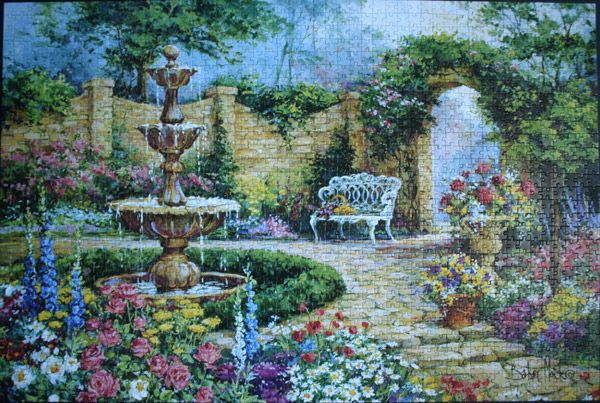
Size: 1000 pieces
Dimensions: 73cm x 48.57cm
Producer: The Canadian Group, Sure-Lox, Classic Treasures series
Notes: The Plaza de Cibeles is a square with a neo-classical complex of marble sculptures with fountains that has become an iconic symbol for the city of Madrid.
The fountain of Cibeles is found in the part of Madrid commonly called the Paseo de Recoletos. This fountain, named after Cybele (or Ceres), Roman goddess of nature, is seen as one of Madrid’s most important symbols. The Cibeles fountain depicts the goddess, sitting on a chariot pulled by two lions. The fountain was built in the reign of Charles III and designed by Ventura Rodriguez between 1777 and 1782. The goddess and chariot are the work of Francisco Gutierrez and the lions by Roberto Michel. The fountain originally stood next to the Buenavista Palace, and was moved to its present location in the middle of the square in the late 19th century. Up until the 19th century both the fountain of Neptune and Cibeles looked directly at each other, until the city council decided to turn them round to face towards the centre of the city. [Wiki]











